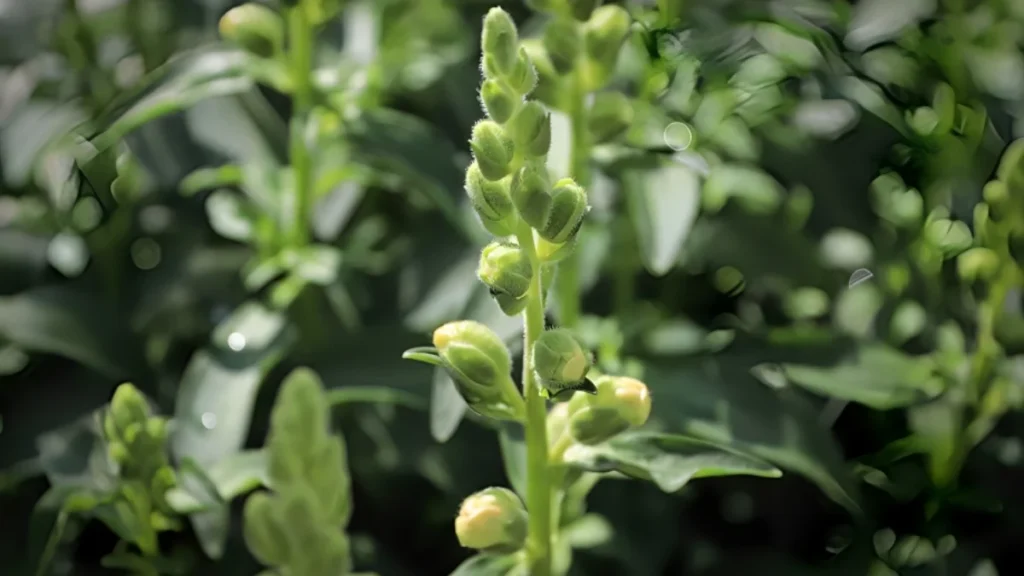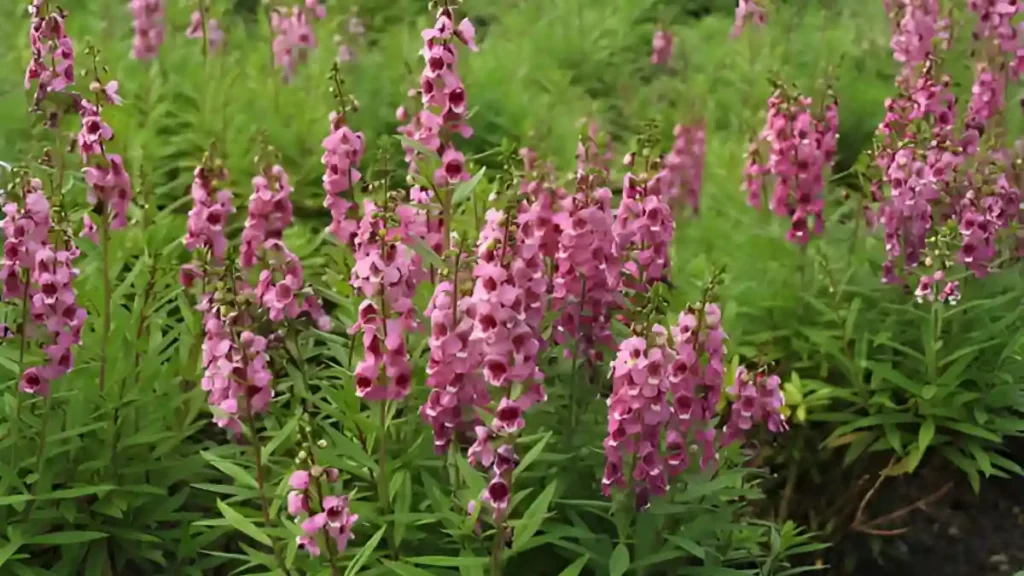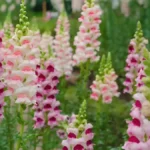Angelonia, often known as summer snapdragon, is a herbaceous perennial native to Mexico and the West Indies. The scientific name is Angelonia angustifolia. It belongs to the plant family Plantaginaceae. Most angelonia plants grow upright, with flowering spires and deep green, glossy foliage. It is also low-maintenance, attracting bees and butterflies while repelling deer and rabbits. Please read our guide to learn more about its growth and therapy.
Learn about how to grow angelonia:
For optimal results, while planting Angelonia, commonly called summer snapdragon, follow these steps:
Planting angelonia
- Plant angelonia bedding plants two or three weeks after the last frost in the spring. Locate an area that receives at least six hours of sunlight per day. They can survive a wide range of soil pH, but it favors 5.5 to 6.2. Place them 12 to 18 inches apart in well-drained soil and keep them moist.
- Plant in the spring after the last frost, when the weather is warm. As deep as the root ball of the plant, dig a hole. Place the plant in the hole and cover it with earth, gently pushing around the roots. Once established, they only need approximately an inch of water per week.

Everything is about angelonia care:
Watering accordingly
- Water young plants frequently to keep the soil evenly moist, water only when the top few inches of soil feel dry. Once established, it becomes more drought-resistant. To keep the soil moist, mulch the plant.
Fertilization
- Angelonia is a light feeder that requires little fertilizer; use a balanced, slow-release fertilizer once a month during the growing season to promote blooming and luxuriant growth. Follow the quantity specified on the product label.
Trimming of angelonia
- Angelonia doesn’t need to be deadheaded to encourage blooming as many other annuals do. Trimming back the plant on occasion helps promote more compact growth and more flowers.
Propagating angelonia
- Using a sharp knife, cut a 3-inch portion off the angelonia stem tip. Take off any leaves from the cutting’s lower portion. Fill a tiny pot with soilless potting mixture, and create a small hole in the soil with a pencil or your finger. Avoid placing the pot in direct sunlight. You can move it into your garden as new leaves start to appear.
Moisture and temperature
- USDA zones 9–11 are ideal for angelonia, which thrives in warm climates. They also do well in the Southwest with some additional watering. The Angelonia plant is tolerant to drought and does not mind hot, muggy summer days.
Pest issues and their fixes
- Aphids can be an issue early in the growth season, but otherwise, angelonia is pest-free. To prevent pests from causing damage to your plants, apply a little spray of insecticidal soap twice a week, as directed by the product’s directions. Whiteflies and aphids are uncommon, so keep a lookout for them.

Conclusion:
Angelonia is a hardy and adaptable flowering plant that grows best in warm areas. They can withstand drought, making them perfect for gardeners in hot, sunny climates. Overall, angelonia is a low-maintenance, stunning addition to any garden. For healthy Angelonia growth, adhere to the given guidelines.
Certainly! If you’d like to learn more, please consider following our WhatsApp Channel: Harvest Gardening
A frequently asked questions:
Q1. How to grow angelonia from seed?
A1. Approximately six weeks before the final frost, start angelonia seeds inside. Press them into sterilized potting soil. Keep the seeds moist. It will take one to three weeks for germination to happen. In the garden, plant seedlings eight inches apart.
Q2. Is Angelonia a perennial?
A2. Warm climates are suitable for growing angelonia as a perennial. In colder climates, it is typically considered an annual.
Q3. When to plant angelonia flower?
A3. Angelonias are best planted in late spring, once the earth has warmed up from the previous frost. To ensure the best planting circumstances, the soil should be at least 60°F.
Q4. Are angelonia poisonous to dogs?
A4. Angelonia is indeed hazardous to dogs if they consume it. Vomiting, diarrhea, drooling, and lethargy are possible symptoms.
Q5. How to grow angelonia in pots?
A5. Angelonias do best in potting soil that drains well and is high in organic content; do not overwater. Keep it in the sun for six hours a day. Apply a balanced, slow-release fertilizer to the angelonia every four to six weeks.



